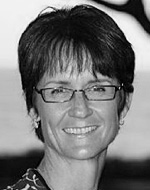Why Achieving Work-Life Harmony Is More Valuable than Striving for Work-Life Balance
The author of a new book says it’s more productive to integrate your career with your passions, talents, and service to others.
Do you ever feel as if you’re living multiple lives? And that your various incarnations—executive, spouse, parent, friend, volunteer, artist, athlete—conflict with, rather than complement, each other? Many of us hold on tight to the hard-wired belief that life is something to be lived once work hours are over. It’s a sad thought. Somewhere out there, a senior finance executive can’t wait to retire so that he can start using his time to pursue a career as a musician. A young woman may be volunteering in an unpaid internship in a school in India, which fulfills her passion to help others, while applying for a job back home that serves only to pay the bills.
Most of us agree that the concept of work-life balance is a myth —and that it only reinforces the zero-sum thinking that work is work and life is life. The delayed gratification inherent in the learn-earn-return model of career stages doesn’t resonate with our innate desire to live each day to the fullest.
The concept of work-life balance is a myth.
That’s why Leading the Life You Want: Skills for Integrating Work and Life captured my attention. After reading the book, I interviewed the author, Dr. Stewart D. Friedman, a professor at the Wharton School and the founding director of the Wharton Work/Life Integration Project. In 1987, motivated by the birth of his son, Friedman, a psychologist by training, started challenging his business school students to articulate how they were going to make the world better for their employees and families. Since then, Friedman says, he’s felt “spurred on” to research how others have indeed improved the world. And over the course of almost 30 years, examining the lives of thousands of individuals, he has discovered something simple, but profound: Those who lead satisfying, successful lives do so by, “taking their unique gifts and passions and making them useful to other people.”
Friedman believes that life is “the intersection and interaction of the four domains”: work/school, home/family, community/society, and the private realm of mind, body, and spirit. And while he agrees that it’s impossible to have it all—all of the time, anyway—it is possible “to be conscious of what and who matter most” and to identify four-way wins, “actions that result in life’s being better in all four domains.” By focusing on work-life integration, not balance, we can create harmony, rather than conflict.
The book includes a survey readers can take to assess their own work-life integration skills. The assessment is followed up with profiles of six well-known individuals who illustrate that it is indeed possible to achieve “four-way wins.” And while the narratives are inspiring, it becomes apparent in reading them that we all already know—and admire—people who are living more integrated lives: the family who volunteers together; the married couple who makes it a priority to “date” during work week lunches; or professionals, like Lori Patterson (who founded a technology consulting firm) and Art Langer (whose company helps young people gain access to education and work), who started businesses to express their passions and leverage their gifts.
The book also provides a curated set of 36 tools to help you conceive and implement a more integrated life. I have to admit, upon my first quick read, the sheer number left me dazed and confused. Friedman suggests using the results of the self-assessment to select a few tools from the list, those that can help readers to develop the skills they most lack, or hone their strengths. That being said, 36 is a lot to process, so I asked him to pick the three that he prioritizes:
1. Align actions with values by finding the larger meaning. Think about what you do every day and how it contributes to others’ well-being. Doing so, Friedman says, will help you “better appreciate the ways your actions are evidence of living your values,” and help identify “activities that are not aligned with your core values” so you reduce or eliminate them. Case in point: When an academic researcher reframed her role as helping advance the careers of women, it renewed her passion for her job.
2. Clarify expectations with the people who mean the most to you and your future. Try to predict how they will answer the question, “What are the main things you want or need from me?” and then reach out to clarify mutual expectations. Considering all of these people as parts of a social system can help you see how they interact. If you follow up on these insights with conversations, it will become easier to meet their needs as well as yours. Case in point: A father who felt disconnected from his three children started meeting with them every weekend for 20 minutes, asking, “What is important to you this week and how can I help?” Over time, he found that his relationships have “profoundly changed.”
3. Challenge the status quo in the lab. Keep a journal for a few days on “new ways of getting things done” and refine the ideas so that they “benefit different parts of your life,” Friedman says. Then select one idea to implement and talk with others to refine it and gain encouragement and support. Use the “theory of small wins” to make incremental progress. Case in point: A retail executive negotiated a delayed start time with his colleagues so that he could invest an additional hour each morning to take care of his health and spend time with his kids. Rather than being sidelined, he was promoted and recognized for his ability to inspire others.
Friedman cautions that the tools require a lot of heavy lifting and that, only through careful consideration and persistence, will they bear fruit. He encourages partnering in twos or even threes, to get as many new perspectives as possible. Although I did not have Friedman’s book to use as a guide at the time, I can personally attest to the power of the first tool. More than 20 years ago, as a CIO, I decided that the most important contribution I could make to my company involved developing people, not technology. As a result, I treated the work that needed to be accomplished as the means to helping others discover their gifts and passions, and not an end in itself. Since then, I have pursued my love for developing people in all that I do, in every aspect of my life—as a wife, parent, leadership coach, author, and volunteer.
Woody Allen once said, “Eighty percent of success is showing up.” While I have found this to be true, it’s only possible if we show up with our whole self in our whole life. Failure to do leads to exhaustion and dissatisfaction. If you want to have a gratifying and successful life making this world a better place, be sure to honor your passions, leverage your unique gifts, and serve others—with the goal of doing it all of the time, in everything you do.




